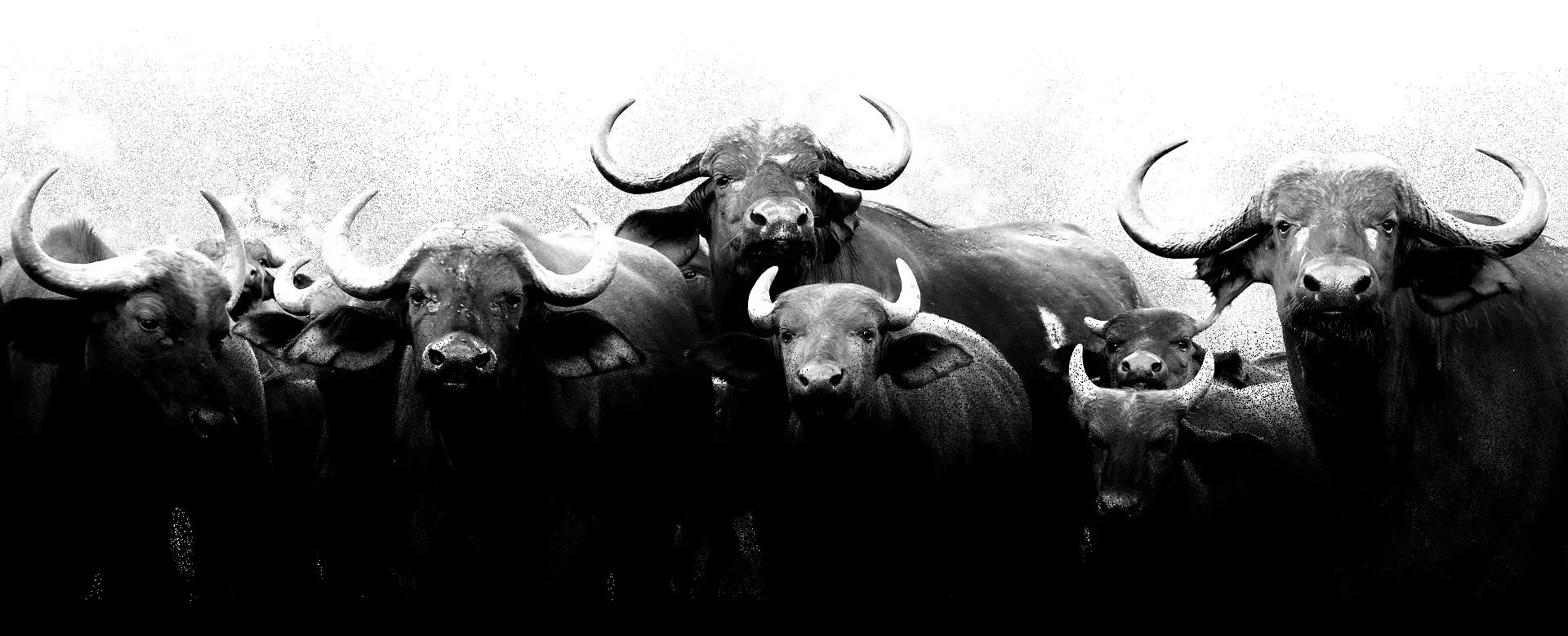
(Canidae)
Canids
Псові
Canidae is a biological family of caniform carnivorans, colloquially referred to as dogs, and constitutes a clade. A member of this family is also called a canid. The Canidae are known as canines, and include domestic dogs, wolves, coyotes, raccoon dogs, foxes, jackals and other species.
Wild canids are native to all continents except Australasia and Antarctica, and also occur as feral (human-introduced) in New Guinea and Australia. They inhabit a wide range of different habitats, including deserts, mountains, forests, and grasslands. They vary in size from the fennec fox, which may be as little as 24 cm in length and weigh 0.6 kg, to the gray wolf, which may be up to 160 cm long, and can weigh up to 79 kg. Only a few species are arboreal—the gray fox, the closely related island fox and the raccoon dog habitually climb trees.
Primarily medium-sized flesh eaters, canids are more omnivorous than many carnivores, taking as food invertebrates, plant matter, and carrion as well as the prey they kill themselves. They are adapted more for endurance than for speed, and they catch prey by pursuit over long distances in relatively open terrain until the prey tires. Kills are made by grabbing for the nape of neck and tackling the prey to the ground. The neck grab is followed by a violent shake, which may dislocate the neck of the prey. Large prey may be immobilized by biting into the soft parts of the underbelly, often resulting in disembowelment and death from shock. Sense of smell is acute and appears to be critical to these animals, as is hearing, but sight is less developed.
All canids have a similar basic form, as exemplified by the gray wolf, although the relative length of muzzle, limbs, ears, and tail vary considerably between species. With the exceptions of the bush dog, the raccoon dog and some domestic dog breeds, canids have relatively long legs and lithe bodies, adapted for chasing prey. The tails are bushy and the length and quality of the pelage vary with the season. The muzzle portion of the skull is much more elongated than that of the cat family. The zygomatic arches are wide, there is a transverse lambdoidal ridge at the rear of the cranium and in some species, a sagittal crest running from front to back. The bony orbits around the eye never form a complete ring and the auditory bullae are smooth and rounded. Females have three to seven pairs of mammae.
All canids are digitigrade, meaning they walk on their toes. The tip of the nose is always naked, as are the cushioned pads on the soles of the feet. These latter consist of a single pad behind the tip of each toe and a more-or-less three-lobed central pad under the roots of the digits. Hairs grow between the pads and in the arctic fox the sole of the foot is densely covered with hair at some times of the year. With the exception of the four-toed African wild dog (Lycaon pictus), five toes are on the forefeet, but the pollex (thumb) is reduced and does not reach the ground. On the hind feet are four toes, but in some domestic dogs, a fifth vestigial toe, known as a dewclaw, is sometimes present, but has no anatomical connection to the rest of the foot. In some species, slightly curved nails are non-retractile and more-or-less blunt while other species have sharper, partially-retractile claws.
The canine penis contains a baculum and a structure called the bulbus glandis that expands during copulation, forming a copulatory tie that lasts for up to an hour. Young canids are born blind, with their eyes opening a few weeks after birth. All living canids (Caninae) have a ligament analogous to the nuchal ligament of ungulates used to maintain the posture of the head and neck with little active muscle exertion; this ligament allows them to conserve energy while running long distances following scent trails with their nose to the ground. However, based on skeletal details of the neck, at least some of the Borophaginae (such as Aelurodon) are believed to have lacked this ligament.
Dentition
Dentition relates to the arrangement of teeth in the mouth, with the dental notation for the upper-jaw teeth using the upper-case letters I to denote incisors, C for canines, P for premolars, and M for molars, and the lower-case letters i, c, p and m to denote the mandible teeth. Teeth are numbered using one side of the mouth and from the front of the mouth to the back. In carnivores, the upper premolar P4 and the lower molar m1 form the carnassials that are used together in a scissor-like action to shear the muscle and tendon of prey.
Canids use their premolars for cutting and crushing except for the upper fourth premolar P4 (the upper carnassial) that is only used for cutting. They use their molars for grinding except for the lower first molar m1 (the lower carnassial) that has evolved for both cutting and grinding depending on the canid’s dietary adaptation. On the lower carnassial, the trigonid is used for slicing and the talonid is used for grinding. The ratio between the trigonid and the talonid indicates a carnivore’s dietary habits, with a larger trigonid indicating a hypercarnivore and a larger talonid indicating a more omnivorous diet. Because of its low variability, the length of the lower carnassial is used to provide an estimate of a carnivore’s body size.
A study of the estimated bite force at the canine teeth of a large sample of living and fossil mammalian predators, when adjusted for their body mass, found that for placental mammals the bite force at the canines was greatest in the extinct dire wolf, followed among the modern canids by the four hypercarnivores that often prey on animals larger than themselves: the African wild dog, the gray wolf, the dhole, and the dingo. The bite force at the carnassials showed a similar trend to the canines. A predator’s largest prey size is strongly influenced by its biomechanical limits.
Most canids have 42 teeth, with the following dental formula: 3/3, 1/1, 4/4, 1-2/2-3. The bush dog has only one upper molar with two below, the dhole has two above and two below. and the bat-eared fox has three or four upper molars and four lower ones. The molar teeth are strong in most species, allowing the animals to crack open bone to reach the marrow.
Social behavior
Almost all canids are social animals and live together in groups. In general, they are territorial or have a home range and sleep in the open, using their dens only for breeding and sometimes in bad weather. In most foxes, and in many of the true dogs, a male and female pair work together to hunt and to raise their young. Gray wolves and some of the other larger canids live in larger groups called packs. African wild dogs have packs which may consist of 20 to 40 animals and packs of fewer than about seven individuals may be incapable of successful reproduction. Hunting in packs has the advantage that larger prey items can be tackled. Some species form packs or live in small family groups depending on the circumstances, including the type of available food. In most species, some individuals live on their own. Within a canid pack, there is a system of dominance so that the strongest, most experienced animals lead the pack. In most cases, the dominant male and female are the only pack members to breed.
Canids communicate with each other by scent signals, by visual clues and gestures, and by vocalizations such as growls, barks, and howls. In most cases, groups have a home territory from which they drive out other conspecifics. Canids use urine scent marks to mark their food caches or warn trespassing individuals. Social behavior is also mediated by secretions from glands on the upper surface of the tail near its root and from the anal glands, preputial glands, and supracaudal glands.
Reproduction
Canids as a group exhibit several reproductive traits that are uncommon among mammals as a whole. They are typically monogamous, provide paternal care to their offspring, have reproductive cycles with lengthy proestral and dioestral phases and have a copulatory tie during mating. They also retain adult offspring in the social group, suppressing the ability of these to breed while making use of the alloparental care they can provide to help raise the next generation. Most canid species are spontaneous ovulators, though maned wolves are induced ovulators.
During the proestral period, increased levels of estradiol make the female attractive to the male. There is a rise in progesterone during the estral phase when female is receptive. Following this, the level of estradiol fluctuates and there is a lengthy dioestrous phase during which the female is pregnant. Pseudo-pregnancy often occurs in canids that have ovulated but failed to conceive. A period of anestrus follows pregnancy or pseudo-pregnancy, there being only one oestral period during each breeding season. Small and medium-sized canids mostly have a gestation of 50 to 60 days, while larger species average 60 to 65 days. The time of year in which the breeding season occurs is related to the length of day, as has been shown for several species that have been moved across the equator and experiences a six-month shift of phase. Domestic dogs and certain small canids in captivity may come into oestrus more often, perhaps because the photoperiod stimulus breaks down under conditions of artificial lighting. Canids have an oestrus period of 1 to 20 days, lasting one week in most species.
The size of a litter varies, with from one to 16 or more pups being born. The young are born small, blind and helpless and require a long period of parental care. They are kept in a den, most often dug into the ground, for warmth and protection. When the young begin eating solid food, both parents, and often other pack members, bring food back for them from the hunt. This is most often vomited up from the adult’s stomach. Where such pack involvement in the feeding of the litter occurs, the breeding success rate is higher than is the case where females split from the group and rear their pups in isolation. Young canids may take a year to mature and learn the skills they need to survive. In some species, such as the African wild dog, male offspring usually remain in the natal pack, while females disperse as a group and join another small group of the opposite sex to form a new pack.
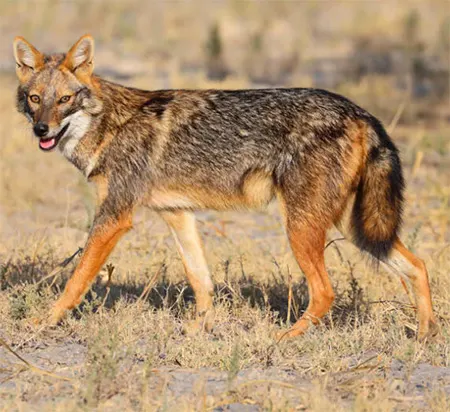
(Canis aureus)
Golden Jackal
Шакал звичайний
It is widely distributed in Turkey, the Balkan Peninsula, the Arabian Peninsula, and further throughout Southwest Asia (including Sri Lanka) to Vietnam. It inhabits a wide variety of habitats, including semi-deserts, various types of grasslands, savannas, forests, mangrove forests, and coastal areas.
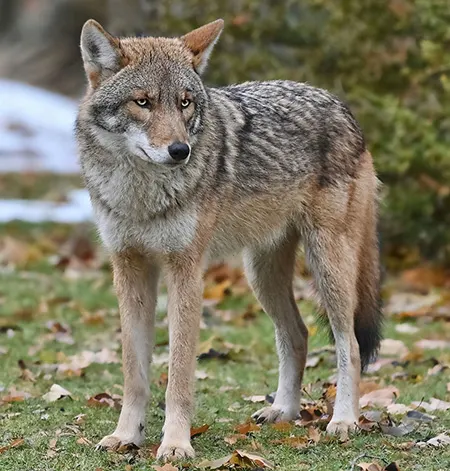
(Canis latrans)
Coyote
Койот
It is widely distributed in North America, from Alaska to Panama. It prefers open plains, such as prairies and deserts, and rarely enters forested areas.
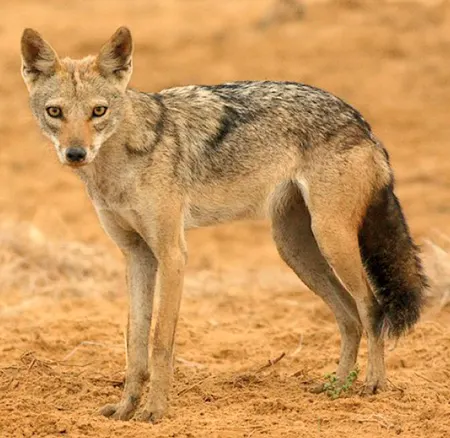
(Canis lupaster)
African Wolf
Вовк африканський
It is found in northern and north-eastern Africa. The range extends from Senegal to Egypt, including Morocco, Algeria, Tunisia, and Libya in the north, and southward to Nigeria, Chad, and Tanzania. It inhabits steppe and semi-desert plains, including arid regions.
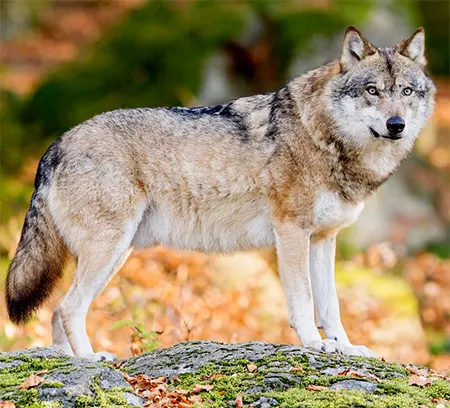
(Canis lupus)
Gray Wolf
Вовк звичайний
It occurs across Eurasia and North America. It inhabits forests, inland wetlands, shrublands, grasslands (including Arctic tundra), pastures, deserts, and rocky mountain peaks from sea level up to elevations of 3,000 m.
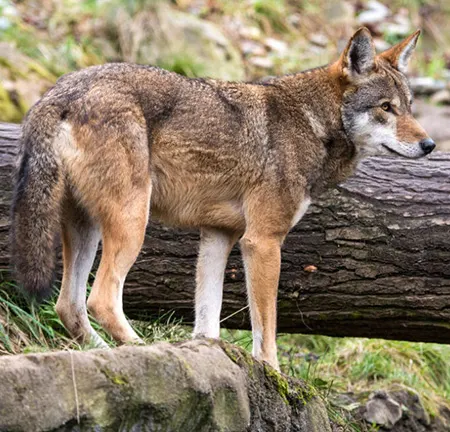
(Canis rufus)
Red wolf
Вовк рудий
Almost extinct in the wild, but was reintroduced to the eastern part of North Carolina, USA.

(Canis lycaon)
Eastern Wolf
Вовк східний
It is found in southeastern Canada, ranging from the Great Lakes to southeastern Quebec.
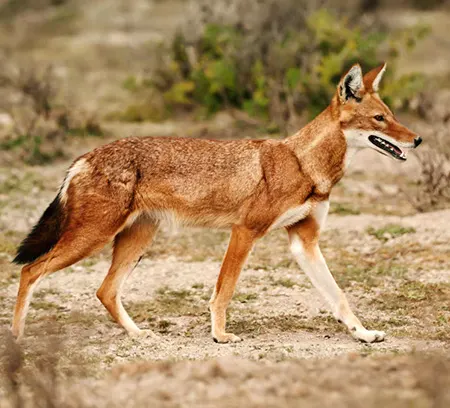
(Canis simensis)
Ethiopian Wolf
Вовк ефіопський
It is native to the Ethiopian Highlands. It is restricted to isolated pockets of Afroalpine grasslands and heathlands, typically occurring above the tree line at elevations of 3,200–4,500 m.

(Cuon alpinus)
Dhole
Куон гірський
It lives in the mountains and forests of Central and South Asia, on the territory of the Indochinese Peninsula, the Malacca Peninsula, the islands of Java and Sumatra. It is also occasionally found in Central Asia, the mountains of Far East, and the Western Sayan Mountains.

(Lycaon pictus)
African Wild Dog
Гієновий Собака
It occurs primarily in Southern and East Africa and is rare in North Africa. It mainly inhabits savannas and arid zones, generally avoiding forested areas.
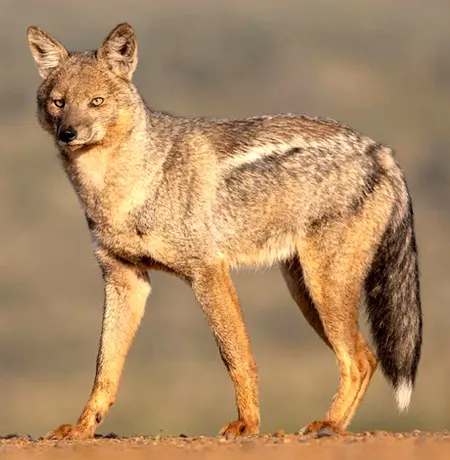
(Lupulella adusta)
Side-striped Jackal
Шакал смугастий
It is native to Central and Southern Africa. It primarily inhabits in woodland and scrub areas.
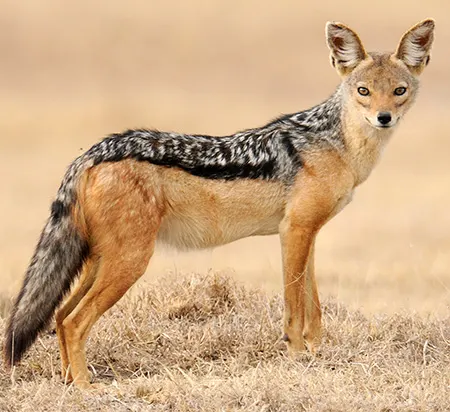
(Lupulella mesomelas)
Black-backed Jackal
Шакал чепрачний
It is native to eastern Africa (Kenya, Somalia, Djibouti, Eritrea, and Ethiopia) and southern Africa (South Africa, Namibia, Botswana, and Zimbabwe). It occupies diverse habitats, including deserts, grasslands, savannas, shrublands, and agricultural lands.
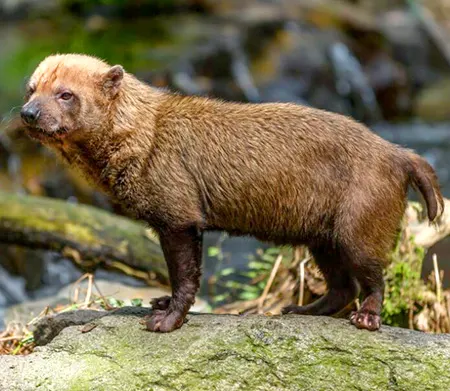
(Speothos venaticus)
Bush Dog
Чагарниковий собака
It is found from Costa Rica through much of South America east of the Andes, reaching central Bolivia, Paraguay, and southern Brazil. It primarily inhabits lowland forests up to 1,900 m elevation, wet savannas, and other habitats near rivers.

(Lycalopex culpaeus)
Culpeo
Кульпео
It is distributed from Ecuador and Peru south to Patagonia and Tierra del Fuego, primarily on the western slopes of the Andes in open areas and deciduous forests. It occurs at elevations of up to 4,800 m.
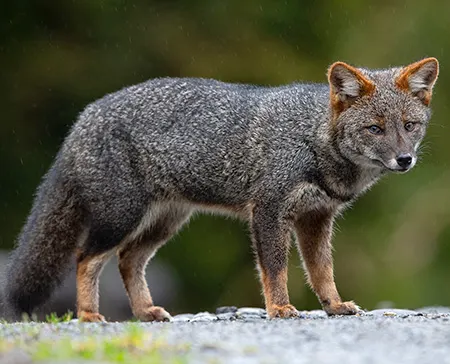
(Lycalopex fulvipes)
Darwin's Fox
Лисиця Дарвіна
It lives in Nahuelbuta National Park, the Cordillera de Oncol, Cordillera Pelada in mainland Chile and Chiloé Island. It is found only in southern temperate rainforests.
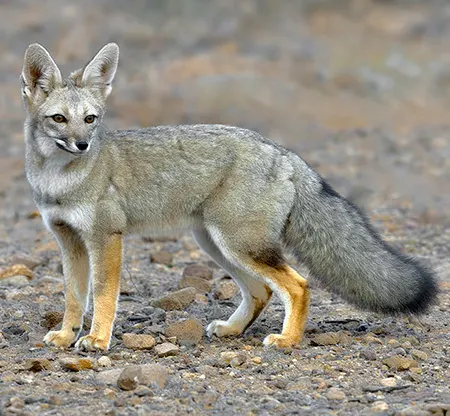
(Lycalopex griseus)
South American Gray Fox
Чілла
It is found in Argentina and Chile in the Southern Cone of South America. Its range comprises stripes on both sides of the Andes mountain range. It inhabits steppes, pampas, and shrublands at elevations of 3,500–4,000 m.

(Lycalopex gymnocercus)
Pampas Fox
Зорро пампаський
It is found primarily in northern and central Argentina, Uruguay, eastern Bolivia, Paraguay, and southern Brazil. It prefers open pampas habitats but can also be found in montane or Chaco forests, dry scrubland, and wetlands at elevations up to 3,500 m.
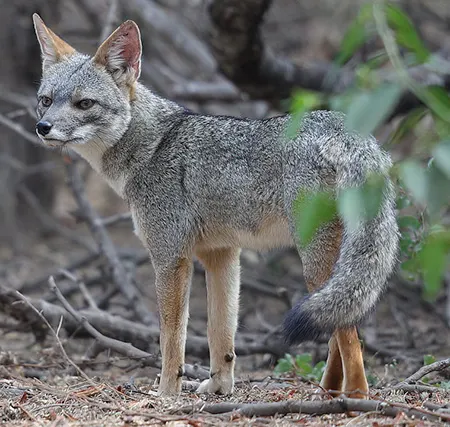
(Lycalopex sechurae)
Sechuran Fox
Зорро сечуранський
First identified in the Sechura Desert, it inhabits arid environments in southwestern Ecuador and western Peru, at elevations from sea level to at least 1,000 m.
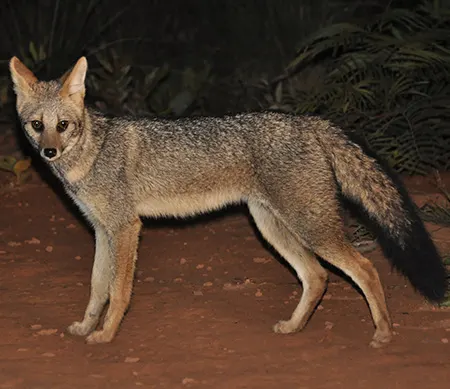
(Lycalopex vetulus)
Hoary Fox
Зорро сивий
It is endemic to Brazil and its geographic distribution is associated with the limits of the Cerrado ecosystem, in an altitude range of 90–1,100 m.

(Cerdocyon thous)
Crab-eating Fox
Лисиця крабоїд
It ranges across savannas, woodlands, subtropical forests, prickly shrubby thickets, and tropical savannas, from Colombia and southern Venezuela in the north to Paraguay, Uruguay, and northern Argentina in the south.

(Chrysocyon brachyurus)
Maned Wolf
Гривастий вовк
It lives in open and semi-open habitats, especially grasslands with scattered bushes and trees, in the Cerrado of southern, and south-eastern Brazil, Paraguay, northern Argentina, eastern and northern Bolivia, and far south-eastern Peru.
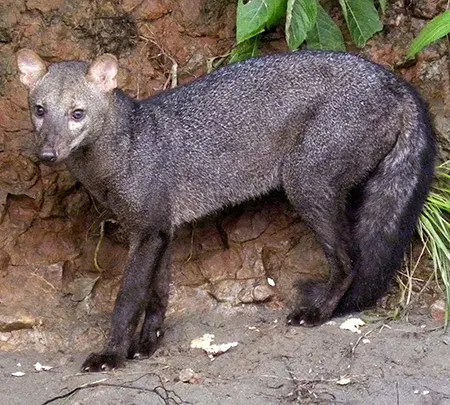
(Atelocynus microtis)
Short-eared Dog
Коротковухий пес
It is found in the Amazon rainforest region of South America, including Brazil, Bolivia, Peru, Colombia, Ecuador, and possibly Venezuela. It occurs at elevations of up to 1,200 m.
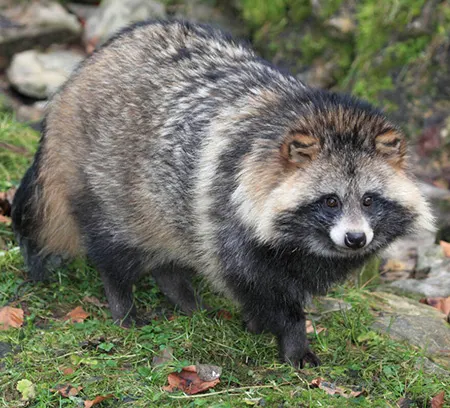
(Nyctereutes procyonoides)
Common Raccoon Dog
Єнотоподі́бний собака звичайний
It is found in eastern Mongolia, eastern Siberia, the Korean Peninsula, eastern China, and north-eastern Vietnam. It has also been introduced nearly all regions of Europe. It prefers forest, forest borders, or dense vegetation, marshes, and reedbeds.
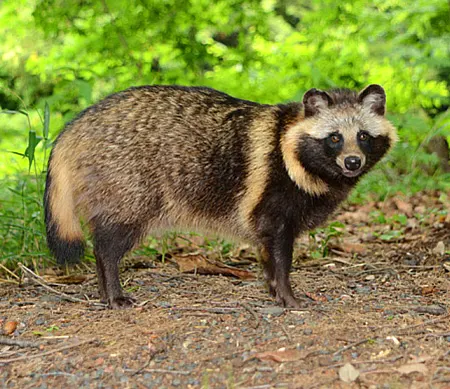
(Nyctereutes viverrinus)
Japanese Raccoon Dog
Єнотоподі́бний собака японський
It is found on Hokkaido, Honshu, Shikoku, Kyushu, Awaji, Sado, and other islands of Japan.
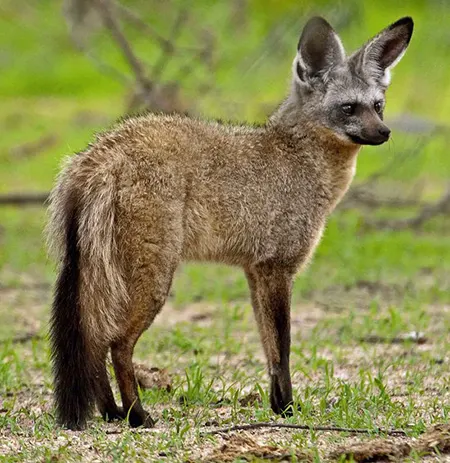
(Otocyon megalotis)
Bat-eared Fox
Вухата лисиця
It has a disjunct distribution across the arid and semi-arid regions of Eastern and Southern Africa, in two allopatric populations separated by approximately 1,000 km.
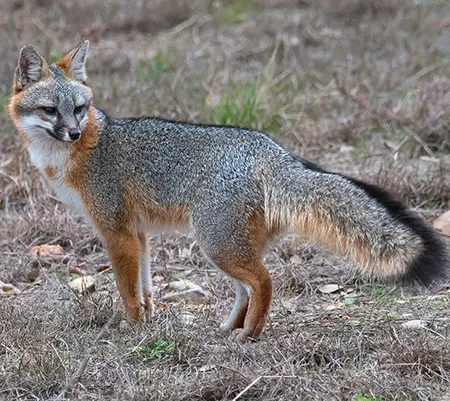
(Urocyon cinereoargenteus)
Gray Fox
Сіра лисиця
It occurs throughout most rocky, wooded, brushy regions of North America from southern Canada to the northern part of South America (Venezuela and Colombia), excluding the mountains of north-western United States.

(Urocyon littoralis)
Island Fox
Лисиця острівна
It is endemic to six of the eight Channel Islands of California: San Miguel, San Nicolas, Santa Rosa, Santa Cruz, Santa Catalina, and San Clemente.
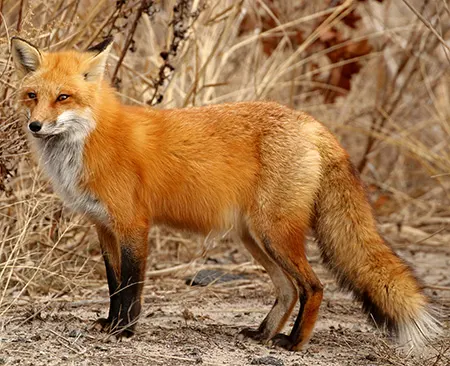
(Vulpes vulpes)
Red Fox
Лисиця звичайна
It is present across the entire Northern Hemisphere including most of North America, Europe and Asia, and parts of North Africa. It is found in a wide range of habitats, including tundra, deserts, forests, wetlands, mountains, shrublands, grasslands, city centers, and farmland.

(Vulpes bengalensis)
Bengal Fox
Лисиця бенгальська
It is endemic to the Indian subcontinent from the Himalayan foothills and Terai of Nepal through southern India, and from southern and eastern Pakistan to eastern India and south-eastern Bangladesh. It favors semiarid, flat to undulating land, bush and short grassland habitats.
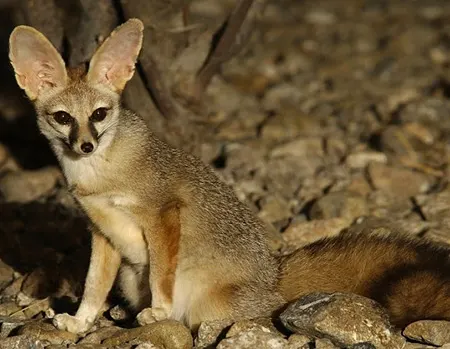
(Vulpes cana)
Blanford's Fox
Лисиця афганська
It is found from Israel throughout the mountainous regions of the middle east to Afghanistan. The range of this species likely covers all the middle-eastern countries, although populations may be discontinuous.
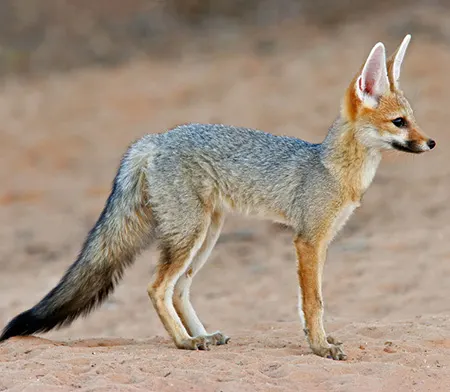
(Vulpes chama)
Cape Fox
Лисиця капська
It ranges from the southern tip of South Africa and Cape Province, north through Namibia, Botswana, Transvaal, Natal and into the Albany district. It prefers open habitat such as arid savannas as well as semi-desert scrub, and avoids forests.
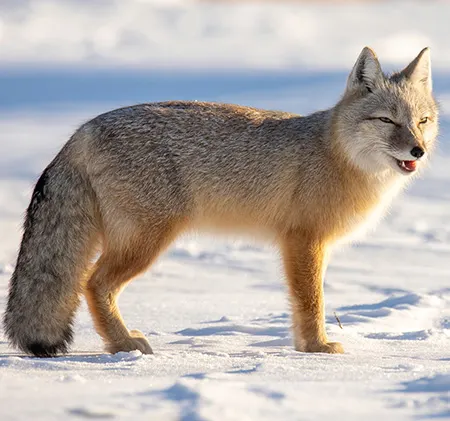
(Vulpes corsac)
Corsac Fox
Лисиця корсак
It is found in the steppes and semi-deserts of Kazakhstan, Uzbekistan, Turkmenistan, and Mongolia. To the south, its range extends into northern parts of Iran, Tajikistan, Kyrgyzstan, Afghanistan, and China. It can also be found in neighboring regions of Russia.

(Vulpes velox)
Swift Fox
Американський корсак
It is native to the Great Plains region of North America, and its range extends north to the southern Alberta and Saskatchewan, Canada, and south to Texas. It lives in short-grass prairies and western grassland.

(Vulpes ferrilata)
Tibetan Fox
Лисиця тибетська
It is endemic to the high Tibetan Plateau, Nepal, China, Bhutan and the Indian states of Ladakh and Sikkim, at elevations of 3,500–5,300 m. It primarily inhabits semi-arid to arid grasslands, well away from humans or from heavy vegetation cover.
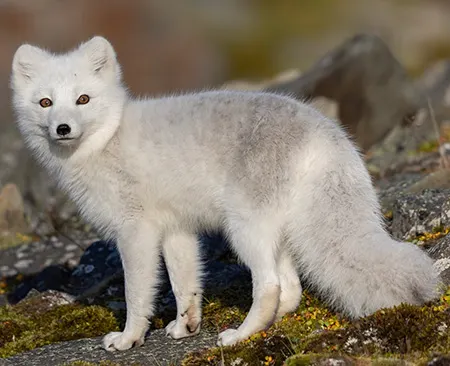
(Vulpes lagopus)
Arctic Fox
Песець
Distributed beyond the Arctic Circle, inhabiting the coasts and islands of the Arctic Ocean, in tundra and partly forest-tundra zones. It is found on the mainland of Norway, Sweden, Finland, Russia, Alaska, Canada and on islands such as Greenland, Iceland and Spitsbergen.
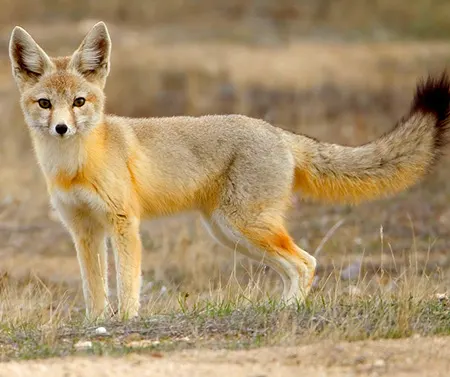
(Vulpes macrotis)
Kit Fox
Лисиця довговуха
It is found in North America, particularly in the south-western United States and north-central Mexico. It inhabits arid and semi-arid regions encompassing desert scrub, chaparral, halophytic regions, and grasslands.

(Vulpes pallida)
Pale Fox
Лисиця бліда
It is found in the band of African Sahel from Senegal in the west to Sudan in the east. It lives in sandy or stony arid terrain.
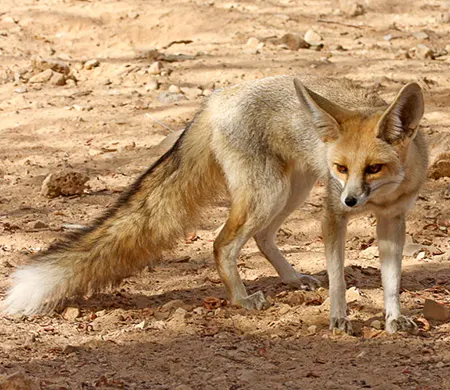
(Vulpes rueppellii)
Rüppell's Fox
Лисиця піщана
It is widely distributed in the arid regions of North Africa, the Arabian Peninsula, and parts of Iran, Pakistan, and Afghanistan. Its typical habitats include sandy and rocky deserts.
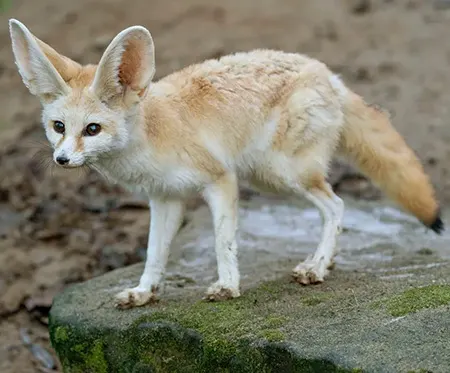
(Vulpes zerda)
Fennec Fox
Фенек
It is distributed throughout the Sahara, from Morocco and Mauritania to northern Sudan, through Egypt and its Sinai Peninsula. It inhabits small sand dunes and vast treeless sand areas with sparse vegetation such as grasses, sedges and small shrubs.
